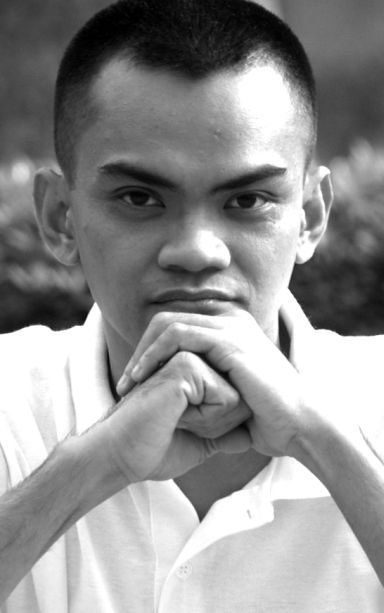
PAREDES
In the native Filipino folklore, driftwood often comes alive, metamorphosing into a mermaid or some other mythical creature. In my hometown in Surigao, the floating piece of log that is believed to possesses such spirit, is called “batang” (I read somewhere that it is from the same word that the province of Batangas, which in the ancient times must have seen a lot of fallen trees brought down from the province’s formerly lush mountains into its rivers and the mighty Taal lake, was named after). Upon sight of driftwood approaching us while we merrily swam in the river near our house back when we were still small kids, we would immediately swim back to the river banks and alert our friends by shouting “batang!”
We imagined the floating driftwood turning into all sorts of scary monsters chasing us in that river flanked by mangroves and nipa. Until now, whenever I see driftwood, I am haunted by this thought of ghostly animal hiding in its shell of deeply-wrinkled and weathered wood.
In a museum in Bali, there’s a gallery full of traditional Balinese carving on driftwood. The approach of the local carver seems to be to let the basic shape of the log dictate the subject matter, and often, the artist finds the image already formed in certain features of the wood. What the artist would do is simply to follow that image suggested by the material, enhancing it with a few strike of his chisel, but always leaving some areas untouched to preserve the original texture.
This seems to validate what Michelangelo once said about the work of the sculptor, that it is a matter of subtraction, of eliminating unwanted material so that what remains is pure image, which the artist already saw before working on the piece of marble, plaster, or wood.
But for the Cebu-based British artist James Doran-Webb, sculpture is a matter of addition. He uses fragments of driftwood gathered from different coastal communities in Cebu, and assembles them meticulously on a stainless steel armature to form horses, goats, eagles, and other animals.
Like Michelangelo, he has the image already formed in his head before working on the material. But unlike the Renaissance master, he does not chip away unwanted wood. Instead, he carefully selects unwanted wood–in this case, reclaimed beached driftwood–and let them fit in a kind of applique jigsaw puzzle according to the image he has in mind.
James has a very good sense of animal anatomy, particularly contour and detail, and this knowledge guides him in his work, which makes use of random wooden fragments. What results is a paradox: all those broken pieces of wood strangely become parts of a very realistic representation of an animal. Every bit of wood is found by accident or chance and yet, each of them fall amazingly into place. As if by some kind of reincarnation, the dead tree has found new life in the form of an animal.
We had another glimpse of James’ work, this time a few sample pieces from his latest installation meant for this year’s Chelsea Flower Show, the annual horticultural exhibit held in London around May. Before shipping his work there, the artist recently gave the Cebuano public a glimpse of it by putting up a small show of sample sculptures at the Sky Park on the third floor of SM Seaside.
Last year, I was one of those few people invited by James to his huge studio complex to see his work created for the same exhibit in London, which was attended by no less than the Queen of England. That was the first time I met James. Being a wood sculptor myself, our short conversation revolved around the challenges of the craft, the nature and properties of wood itself, the behavior of chisels and the sheer joy of giving dead wood new life.
And indeed, it is life that one senses in James’ work. As if by magic, one could almost feel his horses breath, kick or even gallop.
Old folks who lived by the river of my childhood speak about their own encounters with mythical creatures, like the aswang, the dark-skinned, cigar-chomping giant called agta who lived in a tree by the river, the kangaroo-like monster called sigbin, and the batang. I never saw a batang came to life.
But looking at James Doran-Webb’s driftwood sculpture, I feel I already saw that transformation, how the spirit took form and became material.

